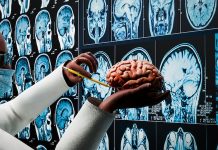
Recovering from a stroke can be a long and challenging journey, but incorporating the right exercises into your daily routine can make a significant difference.
Exercise helps improve mobility, strength, and overall well-being.
Let’s explore some of the best exercises for stroke recovery, backed by scientific research and easy to understand for everyone.
One of the most important types of exercise for stroke recovery is aerobic exercise. Aerobic exercises, like walking, swimming, and cycling, help improve cardiovascular health and increase endurance. Research has shown that regular aerobic exercise can enhance brain function and promote the recovery of motor skills after a stroke.
Starting with short walks and gradually increasing the duration and intensity can help build stamina and improve overall fitness. Swimming is particularly beneficial because it is a low-impact activity that reduces strain on the joints while providing a full-body workout.
Strength training is another crucial component of stroke recovery. Strength training exercises help rebuild muscle mass and improve coordination. Simple exercises like lifting light weights, using resistance bands, or even performing body-weight exercises like squats and push-ups can be very effective.
Studies have found that strength training can lead to significant improvements in muscle strength, walking speed, and overall physical function in stroke survivors. It’s important to start with low resistance and gradually increase it as you become stronger.
Balance exercises are essential for reducing the risk of falls and improving stability. After a stroke, many people experience balance issues, which can limit their ability to perform daily activities.
Balance exercises, such as standing on one leg, heel-to-toe walking, and practicing yoga poses, can help improve stability and confidence. Research suggests that balance training can significantly reduce the risk of falls and enhance mobility in stroke survivors.
Flexibility exercises are also beneficial for stroke recovery. Stretching helps improve the range of motion and reduces muscle stiffness.
Gentle stretches, such as reaching for your toes, shoulder rolls, and neck stretches, can help maintain flexibility and prevent muscle tightness. Incorporating stretching into your daily routine can enhance overall mobility and make it easier to perform other exercises.
Occupational therapy exercises are designed to help stroke survivors regain the ability to perform daily tasks. These exercises focus on improving fine motor skills, coordination, and hand strength.
Activities like squeezing a stress ball, practicing buttoning a shirt, and using therapy putty can help improve hand and finger function. Research has shown that occupational therapy can lead to significant improvements in daily living activities and overall independence for stroke survivors.
In addition to these specific types of exercises, incorporating functional exercises that mimic daily activities can be very helpful.
For example, practicing getting in and out of a chair, climbing stairs, or reaching for objects on a shelf can help improve the ability to perform these tasks in real life. Functional exercises are practical and directly applicable to daily life, making them an important part of stroke recovery.
Research has demonstrated that combining different types of exercises into a comprehensive rehabilitation program can lead to the best outcomes for stroke recovery.
For example, a study published in the journal Stroke found that a combination of aerobic, strength, balance, and flexibility exercises led to significant improvements in physical function and quality of life for stroke survivors.
It’s important to note that each stroke survivor’s recovery journey is unique, and exercises should be tailored to individual needs and abilities. Always consult with a healthcare provider or physical therapist before starting a new exercise program to ensure it is safe and appropriate for your specific condition.
In conclusion, incorporating a variety of exercises, including aerobic, strength, balance, flexibility, occupational therapy, and functional exercises, can significantly improve recovery after a stroke.
These exercises help enhance cardiovascular health, rebuild muscle strength, improve balance, increase flexibility, and regain the ability to perform daily tasks. By making exercise a regular part of your routine, you can take important steps towards regaining strength, mobility, and independence.
If you care about stroke, please read studies about how to eat to prevent stroke, and diets high in flavonoids could help reduce stroke risk.
For more information about health, please see recent studies about how Mediterranean diet could protect your brain health, and wild blueberries can benefit your heart and brain.
Copyright © 2024 Knowridge Science Report. All rights reserved.



